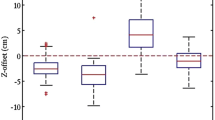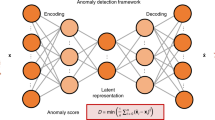Abstract
HIV-related white matter (WM) differences reported across studies are inconsistent. This is due to clinical and demographic heterogeneity of HIV infected populations, and variations in diffusion MRI (dMRI) acquisition, processing, and analysis methods across studies. Therefore, reliable neuroanatomical consequences of infection and therapeutic targets are difficult to identify. Here, we pooled data from six existing HIV studies from around the world as part of the ENIGMA-HIV consortium to evaluate (1) the effects of harmonization of dMRI measures across sites using ComBat, and (2) whether an improved, higher-order tensor dMRI model, the tensor distribution function (TDF), and derived scalar index (FATDF) conferred higher sensitivity across heterogeneous sites to understand the effect of HIV on WM microstructure. This study suggests that improved dMRI indices and harmonization of these measures across cohorts, may be helpful for detecting consistent effects of disease on the brain in international multi-site studies, while preserving biological differences.
Neda Jahanshad for the ENIGMA-HIV Working Group
Access this chapter
Tax calculation will be finalised at checkout
Purchases are for personal use only
Similar content being viewed by others
References
Ellis, R., Langford, D., Masliah, E.: HIV and antiretroviral therapy in the brain: neuronal injury and repair. Nature Reviews Neuroscience 8, 33–44 (2007)
O’Connor, E.E., et al.: Reliability of White Matter Microstructural Changes in HIV Infection: Metaanalysis and Confirmation. American Journal of Neuroradiology 38(8), 1510–1519 (2017)
Zhan, L., et al.: How does angular resolution affect diffusion imaging measures? Neuroimage 49(2), 1357–71 (2010)
Kim, M., et al.: Spatial resolution dependence of DTI tractography in human occipito-callosal region. Neuroimage 32(3), 1243–9 (2006)
Zhu, T., et al.: Quantification of accuracy and precision of multi-center DTI measurements: a diffusion phantom and human brain study. Neuroimage 56(3), 1398–411 (2011)
Fortin, J.-P., et al.: Harmonization of multi-site diffusion tensor imaging data. NeuroImage 161, 149–170 (2017)
Johnson, W.E., Li, C., Rabinovic, A.: Adjusting batch effects in microarray expression data using empirical Bayes methods. Biostatistics 8(1), 118–127 (2007)
Basser, P.J., Mattiello, J., LeBihan, D.: MR diffusion tensor spectroscopy and imaging. Biophys J 66(1), 259–67 (1994)
Jeurissen, B., et al.: Investigating the prevalence of complex fiber configurations in white matter tissue with diffusion magnetic resonance imaging. Hum Brain Mapp 34(11), 2747–66 (2013)
Descoteaux, M., et al.: Deterministic and probabilistic tractography based on complex fibre orientation distributions. IEEE Trans Med Imaging 28(2), 269–86 (2009)
Leow, A.D., et al.: The tensor distribution function. Magn Reson Med 61(1), 205–14 (2009)
Nir, T.M., et al.: Fractional anisotropy derived from the diffusion tensor distribution function boosts power to detect Alzheimer’s disease deficits. Magn Reson Med 78(6), 2322–2333 (2017)
Tuch, D.S.: Q-ball imaging. Magn Reson Med 52(6), 1358–72 (2004)
Wedeen, V.J., et al.: Map** complex tissue architecture with diffusion spectrum magnetic resonance imaging. Magn Reson Med 54(6), 1377–86 (2005)
Wu, E.X., Cheung, M.M.: MR diffusion kurtosis imaging for neural tissue characterization. NMR Biomed 23(7), 836–48 (2010)
Zhang, H., et al.: NODDI: practical in vivo neurite orientation dispersion and density imaging of the human brain. Neuroimage 61(4), 1000–16 (2012)
Isaev, D.Y., et al.: Improved clinical diffusion MRI reliability using a tensor distribution function compared to a single tensor. In: 12th International Symposium on Medical Information Processing and Analysis 2017, SPIE, vol. 10160, pp. 8, (2017)
Paul, R., et al.: Structural Neuroimaging and Neuropsychologic Signatures in Children With Vertically Acquired HIV. Pediatr Infect Dis J 37(7), 662–668 (2018)
Manjon, J.V., et al.: Diffusion weighted image denoising using overcomplete local PCA. PLoS One 8(9), e73021 (2013)
Coupe, P., et al.: An optimized blockwise nonlocal means denoising filter for 3-D magnetic resonance images. IEEE Trans Med Imaging 27(4), 425–41 (2008)
Sled, J.G., Zijdenbos, A.P., Evans, A.C.: A nonparametric method for automatic correction of intensity nonuniformity in MRI data. IEEE Trans Med Imaging 17(1), 87–97 (1998)
Fischl, B.: FreeSurfer. Neuroimage 62(2), 774–81 (2012)
Avants, B.B., et al.: A reproducible evaluation of ANTs similarity metric performance in brain image registration. Neuroimage 54(3), 2033–44 (2011)
Watson, C., et al.: White matter hyperintensities correlate to cognition and fiber tract integrity in older adults with HIV. J Neurovirol 23(3), 422–429 (2017)
Cysique, L.A., et al.: White matter measures are near normal in controlled HIV infection except in those with cognitive impairment and longer HIV duration. J Neurovirol 23(4), 539–547 (2017)
Kuhn, T., et al.: An augmented aging process in brain white matter in. HIV. 39(6), 2532–2540 (2018)
Seider, T.R., et al.: Age Exacerbates HIV-Associated White Matter Abnormalities. Journal of neurovirology 22(2), 201–212 (2016)
Gullett, J.M., et al.: The Impact of Alcohol Use on Frontal White Matter in. HIV. (2018)
Boban, J., et al.: HIV-associated neurodegeneration and neuroimmunity: multivoxel MR spectroscopy study in drug-naive and treated patients. Eur Radiol 27(10), 4218–4236 (2017)
Jahanshad, N., et al.: Multi-site genetic analysis of diffusion images and voxelwise heritability analysis: a pilot project of the ENIGMA-DTI working group. Neuroimage 81, 455–69 (2013)
Smith, S.M., et al.: Tract-based spatial statistics: voxelwise analysis of multi-subject diffusion data. Neuroimage 31(4), 1487–505 (2006)
Mori, S., et al.: Stereotaxic white matter atlas based on diffusion tensor imaging in an ICBM template. Neuroimage 40(2), 570–582 (2008)
Fortin, J.P., et al.: Harmonization of cortical thickness measurements across scanners and sites. NeuroImage 167, 104–120 (2018)
Meichen, Y., et al.: Statistical harmonization corrects site effects in functional connectivity measurements from multi-site fMRI data. Human Brain Map** [Epub ahead of print] (2018)
Benjamini, Y., Hochberg, Y.: Controlling the False Discovery Rate: A Practical and Powerful Approach to Multiple Testing. Journal of the Royal Statistical Society. Series B (Methodological) 57(1), 289–300 (1995)
Acknowledgements
Funding for ENIGMA is provided as part of the BD2K Initiative U54 EB020403 to support big data analytics, and by P41 EB015922. Work from each site was funded by: (1) UCLA: K23MH095661, Clinical and Translational Research Center Grants UL1RR033176 and UL1TR000124 (ADT); MH19535 (TK); (2) Serbia: Provincial Secretariat for Higher Education and Scientific Research 114-451-2730/2016-02; (3) UNSW: NHMRC APP568746 (LC); (4) Brown and ARCH: R01MH074368, the Lifespan/Tufts/Brown Center for AIDS Research P30 AI042853, P01AA019072 (RC); (5) UCSF: K23AG032872 (VV), R01AG048234, and R01AG032289; (6) Resilience: R01MH102151 (JA). This work was also supported by R01MH085604 Neuropathogenesis of clade C HIV in South Africa.
Author information
Authors and Affiliations
Corresponding author
Editor information
Editors and Affiliations
Rights and permissions
Copyright information
© 2019 Springer Nature Switzerland AG
About this paper
Cite this paper
Nir, T.M. et al. (2019). Effects of Diffusion MRI Model and Harmonization on the Consistency of Findings in an International Multi-cohort HIV Neuroimaging Study. In: Bonet-Carne, E., Grussu, F., Ning, L., Sepehrband, F., Tax, C. (eds) Computational Diffusion MRI. MICCAI 2019. Mathematics and Visualization. Springer, Cham. https://doi.org/10.1007/978-3-030-05831-9_17
Download citation
DOI: https://doi.org/10.1007/978-3-030-05831-9_17
Published:
Publisher Name: Springer, Cham
Print ISBN: 978-3-030-05830-2
Online ISBN: 978-3-030-05831-9
eBook Packages: Mathematics and StatisticsMathematics and Statistics (R0)




